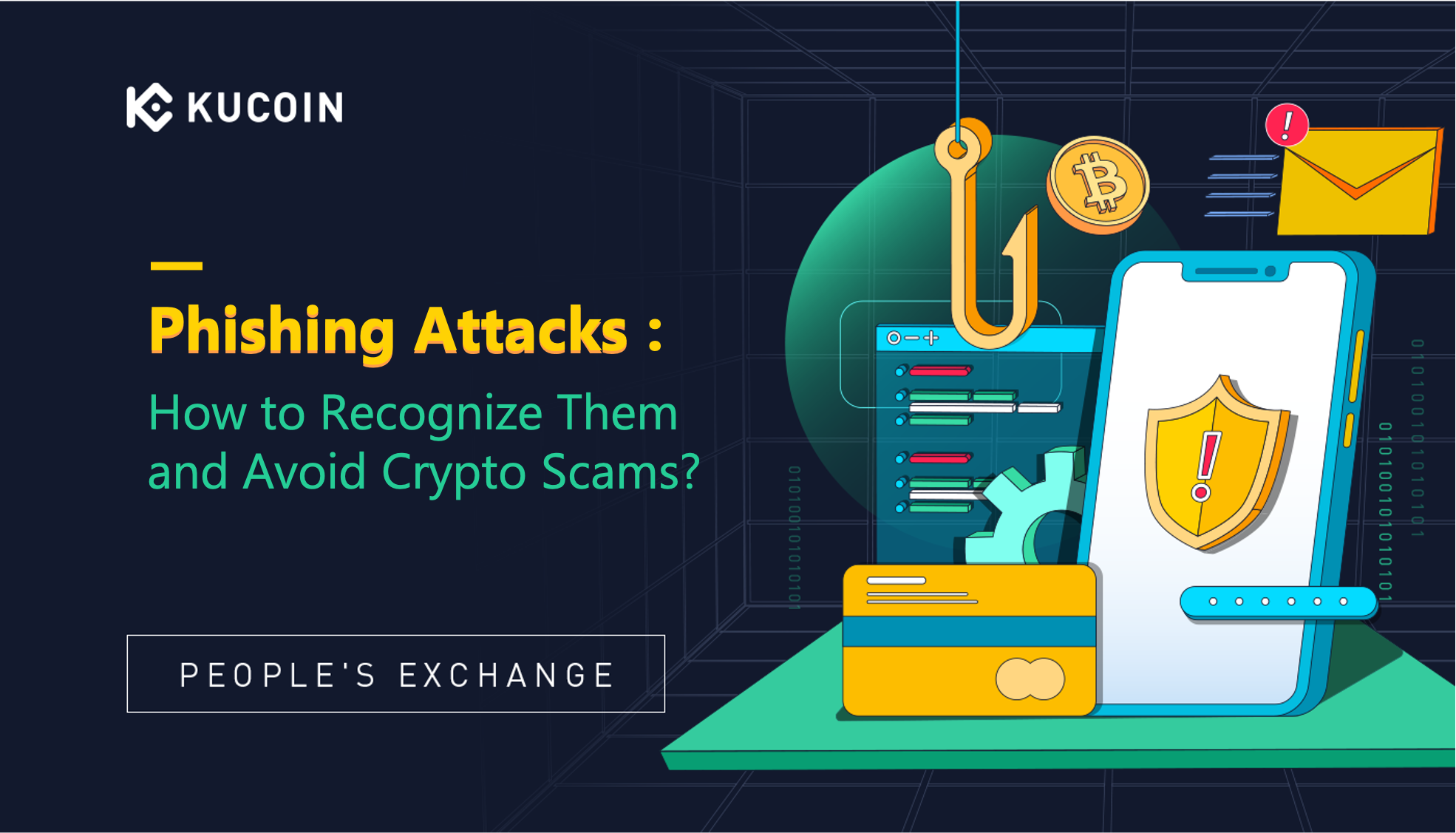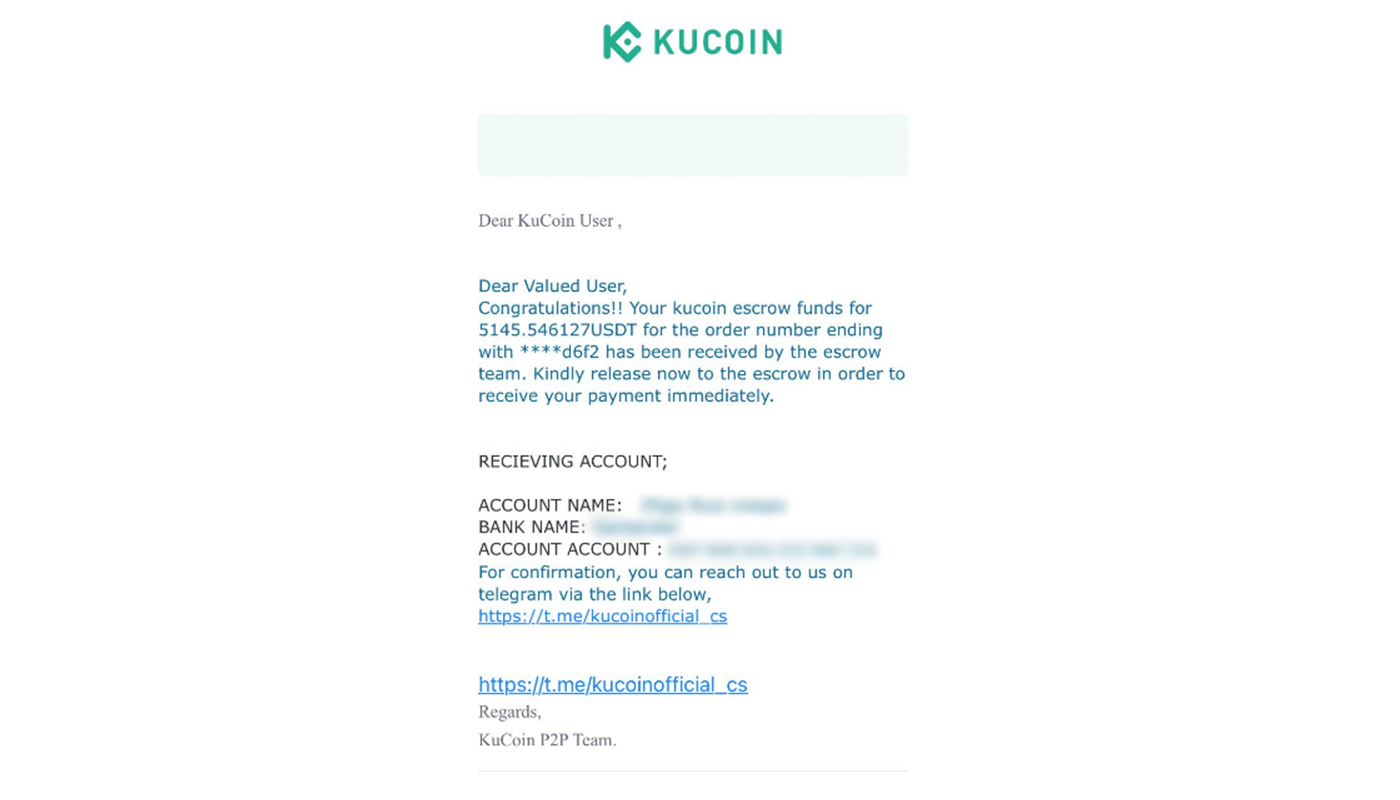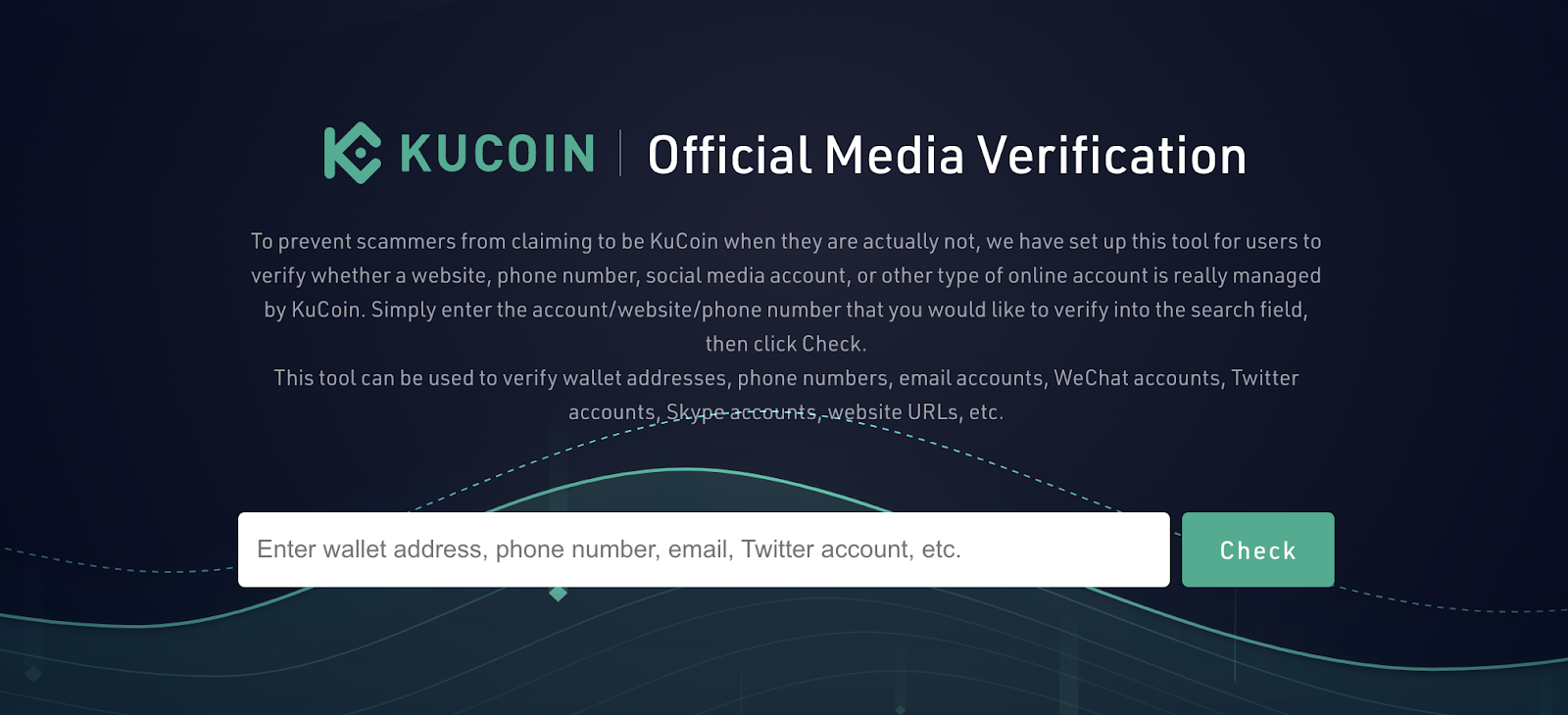Top Phishing Scams in Crypto: How to Recognize Them and Stay Safe

The number of phishing attacks is picking up in tandem with the increasingly bullish market sentiment. Chainalysis estimates suggest that H1 2023 alone recorded losses of around $1 billion in all kinds of crypto scams to investors worldwide.
The crypto world has provided a lucrative opportunity to scammers, with phishing scams becoming quite common across different cryptocurrency exchanges. In this article, we discuss what phishing scams are and the steps you can take to prevent becoming a victim of such phishing attacks.
What Is a Phishing Attack?
A crypto phishing scam is a sophisticated form of social engineering designed to access sensitive information such as private keys, usernames, passwords, and other vital details related to your digital wallet. These scams are prevalent in the cryptocurrency sector, often initiated through email, social media, and text messages. Cybercriminals aim to deceive investors and gain access to their private keys, to conduct cryptocurrency scams, or steal crypto assets through various fraudulent means.
The CertiK's Web3 Security Report for 2023 highlighted that scammers had not only stolen millions in NFTs but also targeted crypto investors with advanced malware. A notable development in these scams is the advent of 'ice phishing.' This tactic specifically targets less experienced Web3 users, tricking them into unknowingly granting hackers access to their wallet holdings. The report further notes that in the first half of 2023, hackers siphoned off an estimated $400 million from Web3 platforms and users. This figure includes significant losses from malicious validator schemes, emphasizing the need for heightened digital wallet security.
These attacks are not limited to direct thefts but can also include ICO scams, rug pulls, and crypto investment scams. To ensure safe crypto trading practices, it's vital to be aware of how to spot and avoid crypto fraud.
Different Types of Phishing Attacks
Users often fall victim to phishing attacks through a variety of methods employed by scammers, such as:
1. Email Spoofing
Email spoofing involves scammers sending emails that mimic legitimate crypto exchange communications. For example, a user might receive a lookalike email from a popular platform like KuCoin, falsely alerting them of a security breach and prompting them to click a malicious link. The following is an example of a spoofed KuCoin email that tries to trick P2P users into releasing their funds:

2. Fake Websites Replicating Real Crypto Trading Platforms
Scammers create websites that are near-identical replicas of authentic crypto trading platforms. Users may inadvertently enter their private keys on these sites, enabling scammers to gain access to their wallets. Some examples of these are kucoin-airdrop.com and kucoin-distribution.com, scam websites impersonating KuCoin exchange and claiming to offer free airdrops of KCS tokens. Here's a screenshot of SMS messages received from such sites:

3. Fake Links in Text Messages
Users often receive text messages that seem to be from trusted crypto services. These SMS scams contain links leading to fraudulent websites where personal information is stolen.
4. Requests for Users’ Private Keys
In this scam, individuals posing as representatives from wallet services ask users for their private keys under the guise of security upgrades, a tactic no legitimate service would employ.
5. Social Media Phishing Scams
Scammers create fake social media profiles resembling those of genuine crypto platforms or personalities to deceive users. These profiles often post links to phishing websites.
6. Fake Customer Support Scams
Here, victims are tricked into interacting with a phony support team, often through social media platforms like Telegram, who then request sensitive information like wallet private keys.
The following is an example of a user receiving a link to a fake KuCoin customer service account on Telegram:


7. WiFi Phishing Attacks
Public WiFi networks, controlled by scammers, are used to intercept user information, including login credentials for crypto accounts.
8. SIM Swap Scams
A SIM swap scam involves tricking mobile carriers into transferring a user's phone number to a new SIM card, which the scammer controls. This breach can compromise two-factor authentication safeguards. For instance, in September 2023, Ethereum co-founder Vitalik Buterin was the victim of a SIM-swap attack that led to his Twitter (X) account being hacked.
9. Fake Investment Opportunities
Scammers promote fraudulent investment schemes or platforms, offering unrealistically high returns or discounted crypto purchases, luring investors into transferring funds, or buying non-existent cryptocurrencies.
10. Pig-Butchering Scams
An emerging and insidious trend, these scams involve building a fake relationship with the victim over social media or dating platforms. Over time, the scammer gains the victim's trust and then introduces a bogus investment opportunity, often leading to significant financial losses.
Real-life Examples of Crypto Scams
The following are some real-life examples of scams the risk control team at KuCoin has received information on and helped resolve in recent months:
1. A student was contacted by "Lucy" from a fake recruitment agency via WhatsApp for a job opportunity. Lucy guided the student to register on a website and create a KuCoin crypto wallet. The student was instructed to deposit money daily for five days with a promise of £800 profit. However, the account balance remained negative, requiring more deposits.
2. Another individual was contacted by a different agency for a task. The person was asked to pay for tasks with the promise of higher rewards. However, when the user wanted to withdraw their earnings, they were told to pay £10k to release it, resulting in a total loss of £13,512.
3. A customer was offered a job on WhatsApp that involved placing orders for items with a promise of high commission. After making multiple payments and consulting with their son, the customer realized it was a scam.
4. A customer was scammed by a trusted financial adviser over nine months. The adviser asked the customer to download Anydesk and invest £10k to access $125k in their wallet. After transferring the money, the adviser disappeared.
5. A customer was told to deposit money into a KuCoin crypto account to optimize their account. They were promised a full refund after completing daily tasks. However, the money was transferred to an unknown crypto address.
6. A person was lured by a YouTube video promising high returns from a fraudulent investment website. They were guided to set up a KuCoin wallet and buy Bitcoin. However, they were tricked into a fabricated margin call situation, resulting in a loss of £14000.
How Does KuCoin Protect Users from Phishing Attacks?
Luckily, when you trade through the KuCoin cryptocurrency exchange, there are multiple ways to prevent phishing.
Official Media Verification
KuCoin emphasizes the importance of verifying the authenticity of any communication. If you receive social media messages or emails with links claiming to be from KuCoin, it's crucial to verify them through official channels. This step is vital in recognizing crypto phishing scams and avoiding email phishing in crypto.

Bookmark the KuCoin Official Site
To ensure safe crypto trading practices, KuCoin recommends bookmarking its official website https://www.kucoin.com. Always verify the URL starts with "https://," a key step in protecting crypto assets from digital currency fraud.

Site Certificate
KuCoin advises users to check the Site Certificate for website authenticity. This is a crucial step in web safety and a fundamental aspect of digital wallet security. A secure lock icon in the web address indicates a secure and authentic site, mitigating risks associated with crypto exchange security.

Anti-Phishing Phrase
A standout feature of KuCoin security is the Anti-Phishing Phrase. Users can set a customizable safety phrase on their KuCoin account. This phrase appears in legitimate emails from KuCoin or during the login process. If the phrase is missing or incorrect, it's a red flag, indicating a potential phishing attack or crypto scam.

Users can configure their Anti-Phishing phrase from the Account Security section after logging into their KuCoin account. This feature is a proactive measure against common crypto scams.
Tips to Identify and Mitigate a Phishing Attack
In a world increasingly susceptible to crypto scams and cryptocurrency fraud, being equipped with the knowledge to spot a crypto scam or scammer is vital. Here's how you can enhance your defense against crypto phishing scams and ensure cryptocurrency security:
Tip 1: Spot and Avoid Fake Ads in Search Engines
Be cautious when using search engines like Google to access cryptocurrency platforms. Double-check URLs to avoid falling for bitcoin scams or crypto exchange security breaches. Phishing sites often create fake ads, making it crucial to verify the legitimacy of any link, especially those claiming to be from reputable sources like KuCoin.

Tip 2: Create Strong Passwords
Strong passwords are your first line of defense against crypto investment scams and digital currency fraud. Avoid password reuse, a common vulnerability highlighted in recent password management surveys. A robust password combines letters, numbers, and symbols, significantly reducing the risk of cryptocurrency scams.
Whenever you create an account to trade on a cryptocurrency exchange (or a wallet of any kind), make sure that your password and code are not something that can be easily guessed. Bitwarden’s 2022 password management survey reveals that 32% of global respondents reused their passwords across 5-10 websites. Such a practice makes it easier for scammers to gain access to your details and, subsequently, your wallet.
A strong and secure password or code usually has over 10 characters, with a combination of letters, numbers, and special symbols. Most password generators on the Internet can easily provide passwords that will keep your data secure and ensure a high level of security on your wallet address.
Tip 3: Use a Password Manager
A password manager is a secure way to manage complex passwords for your crypto accounts, countering email phishing in crypto. These tools can store and autofill your login details, helping identify fake websites by not auto-filling on them, a subtle yet effective way to spot phishing attacks.
Bonus tip: Install good antivirus software on your device to ensure you can easily detect any email containing malware or leads to sites that could put your PC at risk by introducing malware.
Tip 4: Leverage Autofill to Prevent Phishing
Password managers with autofill features can prevent crypto phishing scams. They won't autofill on fraudulent websites, serving as an early warning system against crypto scams.
Tip 5: Enable Two-Factor Authentication
Two-factor authentication adds an essential security layer crucial in protecting crypto assets. This step is particularly important in safeguarding against DeFi scams and ensuring digital wallet security.
Doing this will require the phishing hackers to have access to your phone, even if they somehow gain access to your key and other data.
Tip 6: Question Everything
Question the authenticity of every communication. For instance, verify the source of emails claiming to be from your crypto exchange. Be wary of social media messages or links that seem suspicious, as they might lead to ICO scams or rug pulls. Remember, legitimate exchanges will never ask for payments to unlock your account.
Suspicious Emails
As an example, if you get an email telling you that your account has been locked, make sure that it is from the official email address of your crypto exchange.
Similarly, before clicking on any links to a page you might receive via the site or social media, ensure they are legitimate.
Don't Provide Your Code and Login Details
The same also applies to providing your login details on any website. Usually, people who fall victim to phishing do not check to see if the website to which they provide their data is legitimate, leading to them losing money.
Additionally, make sure to use a secure and trustworthy email service provider, and if you use a self-built email server, be sure to enable DKIM, DMARC, and SPF.
Do not send any cryptocurrencies to users you do not recognize. No exchange will ever contact you to say that your account has been blocked and can be fixed in exchange for money. If you get an email like this, it is probably sent by malicious attackers who wish to steal your funds by accessing your wallets.
Can Phishing Be Completely Stopped?
While it's challenging to completely eradicate phishing attacks, especially in the realm of cryptocurrency security, there are effective strategies to reduce their impact significantly. The nature of crypto phishing scams is continually evolving, which makes creating entirely immune systems difficult. However, user awareness and education play a crucial role in prevention.
Attackers often adapt their strategies to circumvent new security measures. For example, as email providers improve spam filters, scammers refine their tactics to bypass these defenses, leading to more sophisticated email phishing in crypto scams. Similarly, while crypto exchanges can enhance their security protocols to safeguard user data, the human element remains a key target. Scammers frequently exploit this by crafting scams that seem too good to be true, like promising unrealistic returns in crypto investment scams or creating false narratives in ICO scams.
To safeguard against these threats, it's essential to understand phishing attacks and how they can manifest in the crypto world. You should be vigilant about digital currency fraud, DeFi scams, and other types of cryptocurrency scams. Some best practices include:
> Educating Yourself: Stay informed about common crypto scams in 2023. Recognizing the signs of a scam, such as unsolicited investment opportunities or requests for private information, is crucial in protecting crypto assets.
> Digital Wallet Security: Ensuring the security of your digital wallet is paramount. Use strong, unique passwords, enable two-factor authentication, and be wary of requests for your private keys or seed phrases.
> Blockchain Security Awareness: Understanding the security features of the blockchain technology you're using can help identify potential vulnerabilities and spot a crypto scam or a Bitcoin scammer.
> Crypto Exchange Security: Choose exchanges that prioritize security and have a strong track record of defending against crypto scams. Look for features like advanced encryption, fraud detection systems, and user verification processes.
> Safe Crypto Trading Practices: Engage in trading practices that minimize risk, such as not sharing your trading strategies or personal account details on public forums or social media.
Closing Thoughts
Remember, the key to safeguarding your digital assets lies in continuous education, vigilance, and adopting best practices such as using strong, unique passwords, enabling two-factor authentication, and scrutinizing all communications and links related to your crypto activities. Additionally, choosing reputable and secure crypto exchanges, being cautious with unsolicited investment opportunities, and understanding the technological foundations of blockchain and cryptocurrency are essential steps in fortifying your defenses.
As the crypto world continues to expand and integrate into mainstream finance, the responsibility for security increasingly falls on individual users. By empowering yourself with knowledge and the right tools, you can enjoy the benefits of cryptocurrency while effectively mitigating the risks of phishing scams. Let's not forget: in the digital age, being proactive about security is not just a recommendation but a necessity for safeguarding your valuable digital assets.


